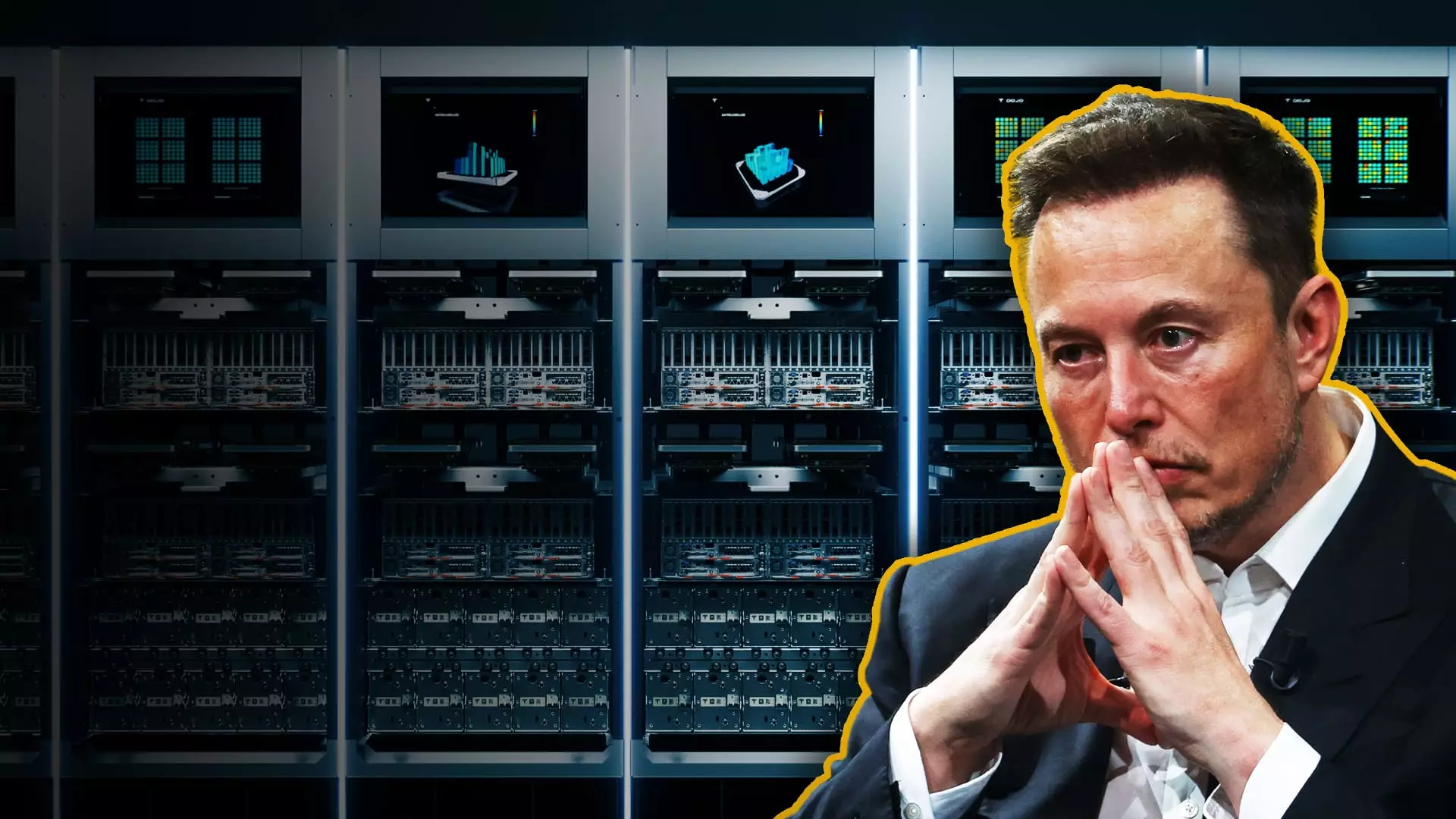Elon Musk, a name synonymous with innovation and technological ambition, is poised to reshape multiple industries through the development of advanced supercomputers. Embracing his dual roles as CEO of Tesla and founder of the new AI startup xAI, Musk champions a vision where artificial intelligence becomes the cornerstone of his business operations. As early as January, he articulated the notion that Tesla should be recognized not merely as an automotive manufacturer but as an AI and robotics powerhouse. This strategic positioning indicates a substantial shift in how the company intends to leverage AI technologies, particularly through its cutting-edge supercomputer infrastructure.
Central to Musk’s aspirations is Tesla’s custom supercomputer, Dojo, which is being developed in Buffalo, New York. This ambitious project, with a projected investment of half a billion dollars, aims to harness the massive amounts of data generated by Tesla vehicles. These cars, equipped with multiple cameras and sensors, continually capture information that can be invaluable for training AI models. By integrating this data into its systems, Tesla hopes to refine its Autopilot and Full Self-Driving (FSD) features, elevating them from what many see as impressive but ultimately limited functionalities to the potential for genuine autonomy.
Musk’s endeavors don’t stop with Dojo; the company is constructing another supercomputer cluster named Cortex at its Austin headquarters. The objective of these technological enhancements is clear: to push the boundaries of driver assistance technologies that can evolve into fully autonomous driving capabilities. Notably, subscriptions to Tesla’s FSD features, currently priced at $99 monthly, include advanced functionalities such as automatic lane changing and traffic light recognition. As industry experts, such as Steven Dickens from the Futurum Group, suggest, with over five million vehicles on the road streaming vast quantities of video data back to the company, Tesla’s potential for improving its self-driving algorithms appears boundless.
Nevertheless, the path to achieving full autonomy is fraught with challenges. Despite significant advancements, neither Autopilot nor FSD currently affords drivers the luxury of disengaging from the driving task entirely. This critical limitation has brought Tesla under the scrutiny of regulators, who have accused the company of overpromising and misrepresenting the capabilities of its technologies. This scrutiny is particularly urgent as the market for autonomous vehicles heats up, creating a competitive landscape where companies such as Waymo, GM’s Cruise, and Amazon’s Zoox are already operational with fully autonomous taxi services.
As Tesla grapples with its position in this rapidly evolving industry, recent earnings reports have raised concerns over performance. While analysts remain optimistic about Musk’s long-term goals, it’s evident that Tesla must expedite its journey toward autonomy to maintain its sky-high valuation and satisfy investors eager for the promise of robotaxis. The anticipation surrounding Tesla’s robotaxi event, now slated for October, reflects the industry’s eagerness to witness tangible progress in Musk’s ambitious agenda.
Beyond automotive innovations, Musk’s ambitions extend into the realm of AI through the establishment of xAI, which debuted in 2023 as a competitor to industry giants like OpenAI, Microsoft, and Google. With xAI, Musk aspires to create alternative large language models and AI products, spearheaded by the chatbot Grok. The company recently announced plans to develop a supercomputer in Memphis, Tennessee named Colossus, aimed at training their AI systems—indicative of Musk’s commitment to robust AI infrastructure.
In 2018, despite being an OpenAI co-founder, Musk severed ties with the organization, subsequently becoming one of its most vocal critics. His departure hints at a broader philosophical divide over the direction of AI technologies. The establishment of xAI signals Musk’s intention to reclaim agency over AI development pathways and to cultivate products that align with his vision for a more human-centric approach.
Elon Musk’s ambitions in AI and supercomputing present an intriguing foresight into how technology may redefine various sectors. While the transformative potential of systems like Dojo and xAI is vast, a myriad of challenges remains, particularly surrounding regulatory compliance, technological feasibility, and intense competition. As Musk rallies his resources and vision to achieve these feats, the world watches closely, anticipating whether his endeavors will ultimately yield groundbreaking advancements in artificial intelligence and autonomous driving.

